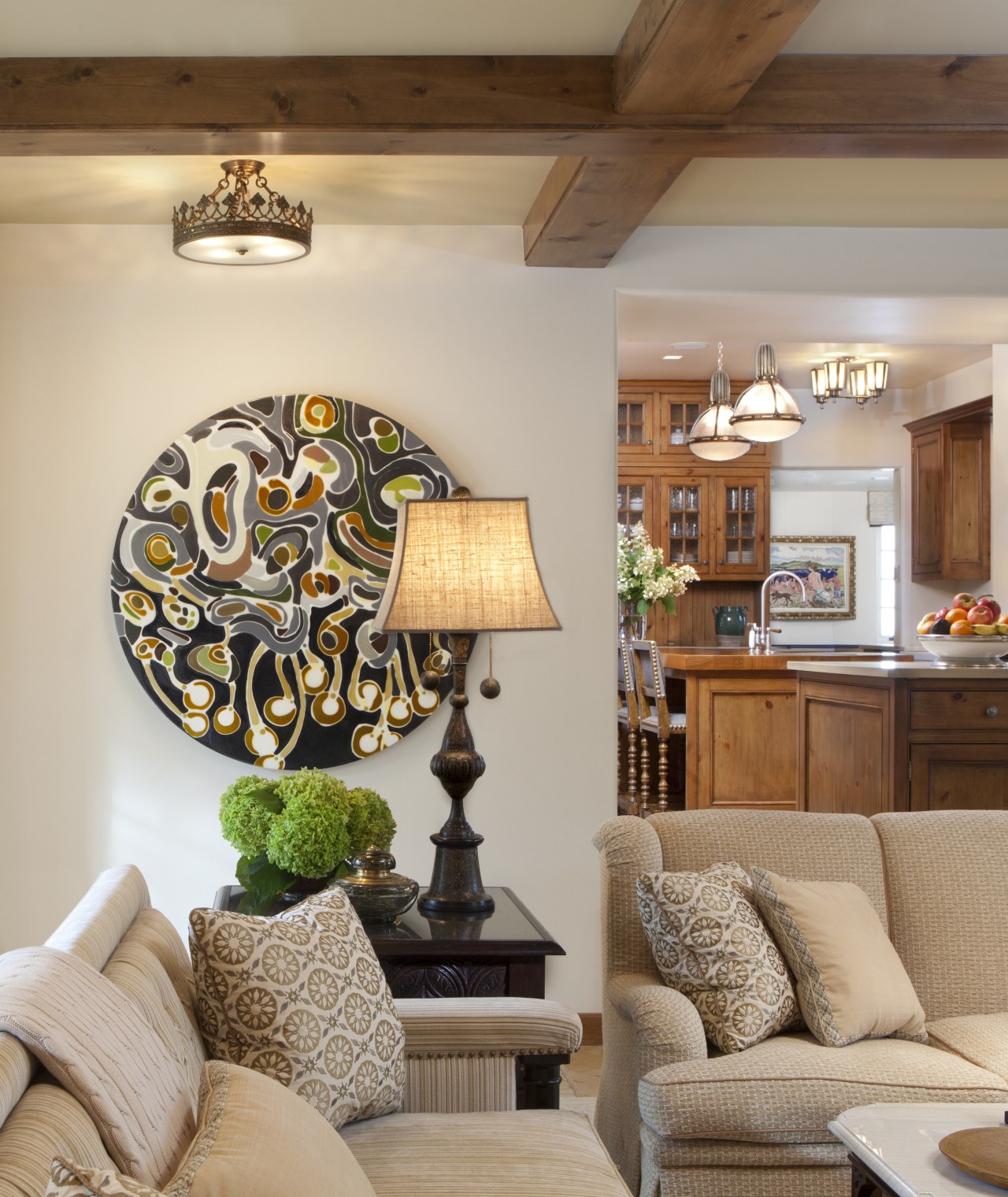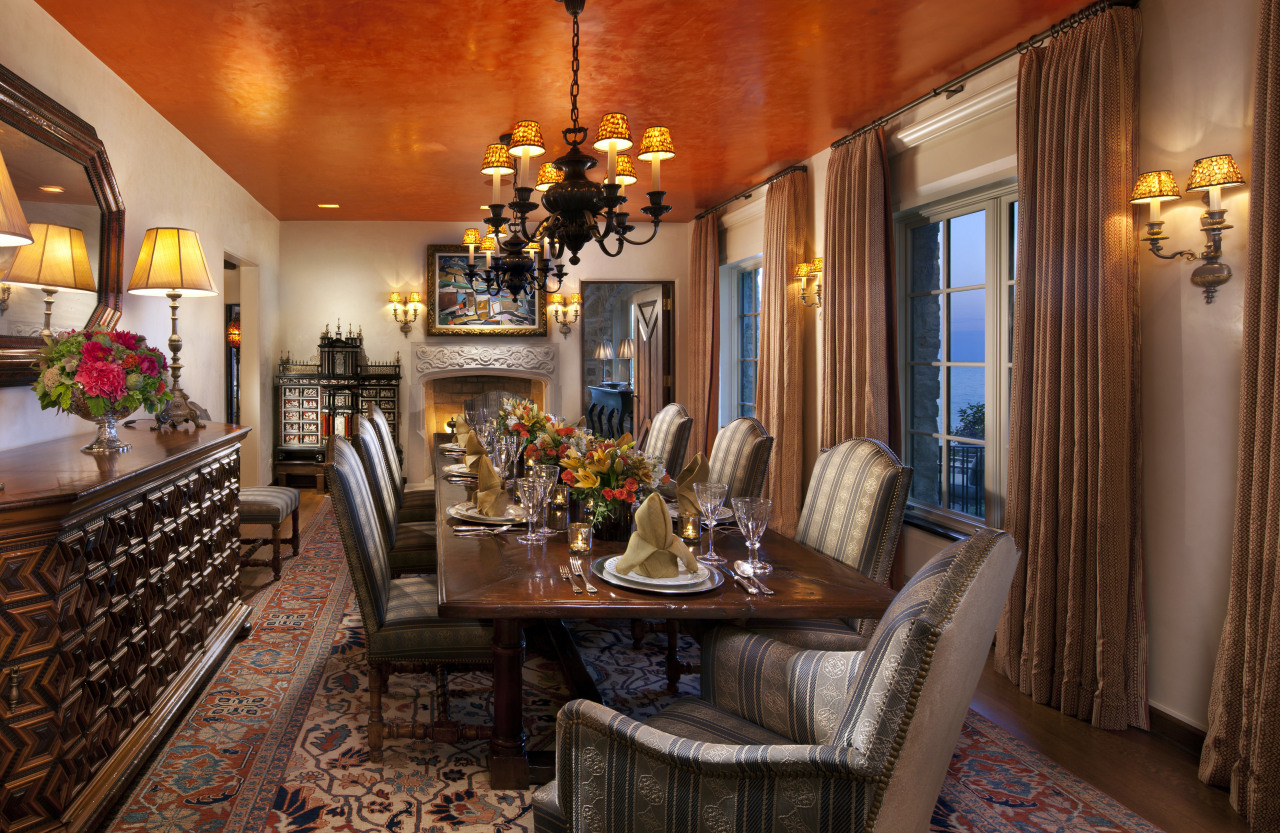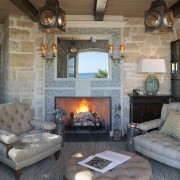Graceful spaces
An interior rethink by Arthur Dunnam gives this cottage a balanced appeal

When your much-loved residence is designed in a classic style, a deft approach is required to achieve interiors that are both faithful to the period and meet the needs of day-to-day life.
This 1920s Cotswold Revival cottage is a faithful rendition of the English version, on a larger scale. Interior designer Arthur Dunnam says he was asked to bring a richer aesthetic to the interiors and improve the overall logic and flow of the rooms.
"The original house was charming and authentic. However, the interiors felt a bit too crude and overly cottage-like. It also lacked the level of detailing and finesse needed to reflect the unpretentious, yet stately exterior.
"We wanted to bring a livable, luxurious feeling to the interiors as well as brighten them up a bit to literally bring light into the house, which had been a bit gloomy. Essentially, a more cohesive feel was required.
"To achieve this, we introduced pieces with a Jacobean or Queen Anne mood, and lighting fixtures and appointments with an appropriately gutsy feel to them solid and reliable, like the house itself. However, at the same time, each room has an individual character."

Dunnam says his overall approach was to retain and highlight important existing interior elements, such as the carved limestone chimneys, and embellish or freshen others, including the ceiling beams and a walnut-paneled study.
The entry feels inviting, and is carpeted to withstand the heavy traffic in this area. Multiple lighting sources create a bright, warm appeal.
In the sunroom, Dunnam removed a set of French doors, replacing them with an arched window. The new seating area in what was once a through space greatly improves the room's logic and flow. At the same time, the designer created new sofas for the room that were smaller but could seat more people. This also made the room seem more spacious.
In the dining room, Dunnam introduced floor-to-ceiling drapes that bring grandeur to the space and draw the eye up to the feature ceiling. Existing dining chairs were kept, but the backs were lowered and softened with curves to make the space feel taller and more open.
Changes to the master bedroom made by architect Catherine Osika and the designer included new dormer windows. These mimic the existing sleeping porches and make the most of the breathtaking lake views. The soft, welcoming look of the bedroom is enhanced by a custom-embroidered grasscloth wallcovering by Crezana, and Chelsea Editions embroidered fabric on pillows and window treatments.

"The custom gilt iron coffee table is topped with resin-coated goatskin parchment, which is both beautiful and family friendly. It was inspired by the Gilbert Poillerat designs from the 1940s," says Dunnam.
A massive alabaster ceiling pendant from Carlos de la Puente also contributes to the refined look.
"The overall aesthetic responds to the rich look of the era," says Dunnam. "An emphasis on texture accentuates the refined nature of the decor and at the same plays up more rustic accents that are true to the style of the original Cotswold cottages, which were built for farm workers.
"All in all, the home's revamped interiors read as a seamless integration of the already beautifully detailed exterior and garden."
Credit list
Interior designer
Builder
Flooring
Living room furnishings
Bedroom furnishings
Home theater
Renovated cabinetry company
Entry hall furnishings
Dining room furnishings
Heating
Story by: Charles Moxham
Home kitchen bathroom commercial design













